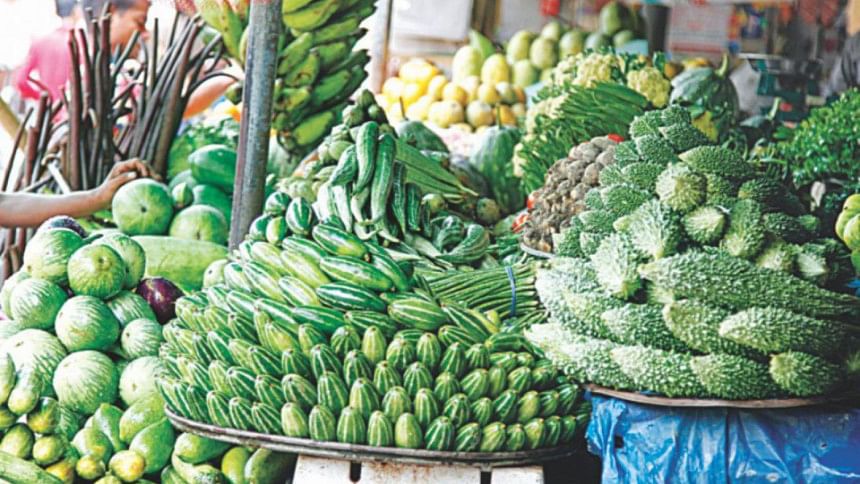A multidimensional approach to food safety

Unsafe food causes a staggering range of diseases. From diarrhoea to cancer and to hepatitis, food containing harmful bacteria, viruses, parasites or chemicals is a major threat to public health, both globally and in the WHO South-East Asia Region. Every year, an estimated 420,000 people die worldwide due to foodborne diseases, with the South-East Asia Region accounting for a disproportionate share—some 175,000.
Tackling the problem is more important than ever. The globalised nature of modern food chains, alongside emerging hazards such as antimicrobial resistance and climate change, makes the threat of foodborne diseases increasingly acute. Apart from the potential for foodborne diseases to harm public health within and between countries, their occurrence can also compromise development, trade, nutrition and food security. Informal food production at the community level, meanwhile, poses an ongoing challenge, with basic hygiene, adulteration and falsification key concerns.
Countries across the region have been active in addressing the issue. Since 2015, seven of the region's 11 countries have conducted in-depth assessments of their foodborne disease surveillance and response capacity. All have strengthened their national Codex structure—the standards and guidelines created by the Codex Alimentarius Commission to promote food safety and protect consumers, especially in the context of international trade. Notably, with the support of WHO and the Food and Agriculture Organization of the United Nations (FAO), simulation exercises have been carried out to test region-wide coordination and communication, with the International Health Regulations (IHR 2005) anchoring all proceedings.
Progress continues. As a show of commitment, more than 30 representatives from nine of the region's countries are attending WHO-supported conferences on the future of food safety in Addis Ababa, Ethiopia in February and in Geneva, Switzerland in April. Each event will have a significant impact on a range of food-safety-related issues (both globally and in the region), from dealing with present challenges to aligning food safety strategies across sectors and borders.
Immediate action is both possible and necessary. As outlined in the region's Flagship Priorities and the 2030 Sustainable Development Agenda respectively, emergency preparedness must be scaled up, and safe and healthy food made accessible to all. To achieve both, several high-impact interventions should be made.
First, food safety management and regulation frameworks should be strengthened. To do this, multi-sectoral action that involves all stakeholders—from food business operators, both formal and informal, to consumers, academics, scientists and the media—is crucial. By actively engaging each of these groups, food safety authorities have the best chance of achieving the integrated management of food supply chains and ensuring any weaknesses are addressed as a matter of priority. Importantly, each stakeholder must know their responsibilities and the standards and regulations to which they are accountable.
Second, a risk-based approach to monitoring food safety should be developed and implemented in each of the region's countries. To that end, monitoring compliance with food safety and quality regulations should begin at the primary production level, with strong partnerships forged between inspection officials and primary producers to identify potential risks and find ways to mitigate them. This collaborative approach, which should begin at the primary producer level and end at the point of sale, is the best way to enhance buy-in among all stakeholders. It is also the best way to ensure compliance.
Third, foodborne disease surveillance should be strengthened region-wide. The first step towards securing food safety is knowing when, where, why and how foodborne hazards and resulting illnesses occur. To make that happen, member states region-wide should fully implement the strategies outlined in WHO's manual on strengthening the surveillance of and response to foodborne diseases. That includes the integrated surveillance of antimicrobial resistance in foodborne bacteria. In addition, there is strong potential to increase engagement with the International Network of Food Safety Authorities (INFOSAN) via its communication platforms, as well as to enhance coordination between national INFOSAN and International Health Regulations (IHR) focal points.
And fourth, investing in all aspects of food safety should be better prioritised. Advocacy is crucial to ensure high-level leaders understand that investing in food safety protects and promotes public health as well as sustainable development more broadly. This is especially the case as rapid changes in food production techniques occur, new technologies are adopted, dietary shifts proceed, and antimicrobial resistance and climate change emerge as significant hazards. Substantial, well-thought-out investments (for example in developing food safety legislation and policy, enhancing risk-based inspections and compliance enforcement, or improving laboratory services) are crucial to strengthening and accelerating region-wide progress.
There is strong support to achieve this objective. At both the regional and global levels, WHO, FAO and the World Organisation for Animal Health (OIE) have established a tripartite coordination mechanism to support food safety activities. As part of that tripartite, WHO will continue to support the region's member states to reduce food-related illness and death and diminish the risk of national and transnational foodborne disease outbreaks. Like the process of producing food itself, securing food safety is both science and art. Each must be mastered, and safe and healthy food made accessible to all, all of the time.
Dr Poonam Khetrapal Singh is WHO South-East Asia Regional Director.

 For all latest news, follow The Daily Star's Google News channel.
For all latest news, follow The Daily Star's Google News channel. 



Comments